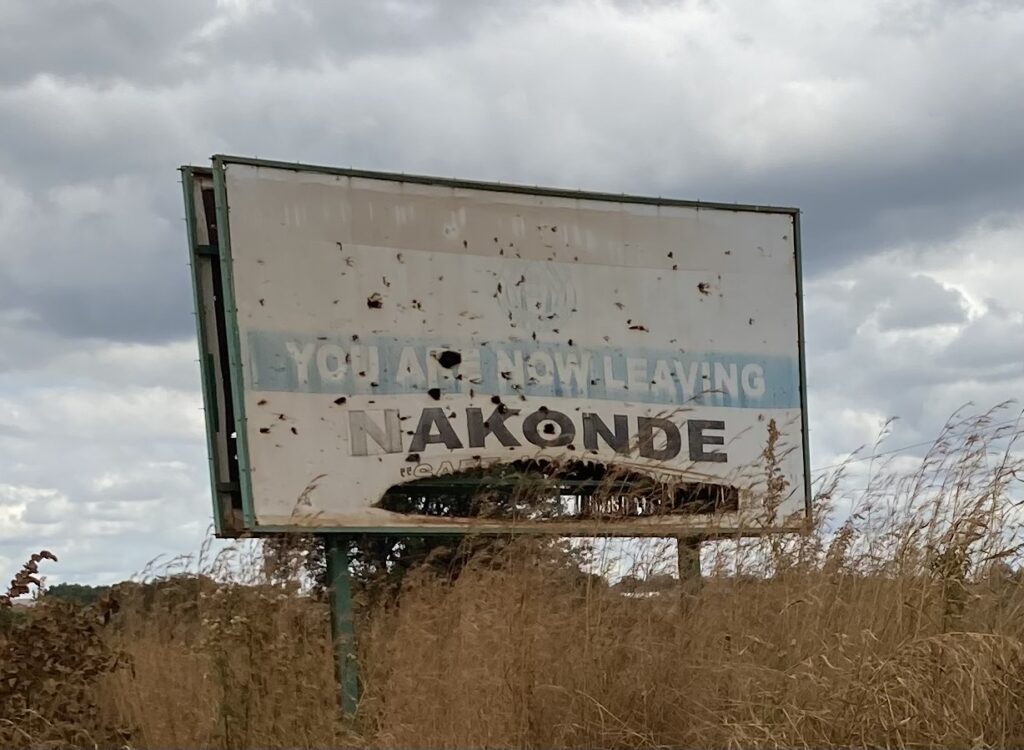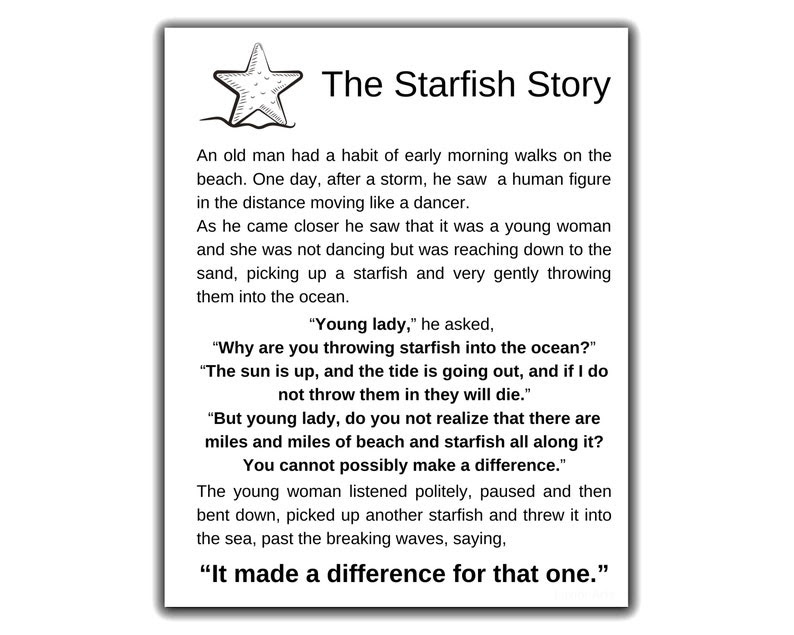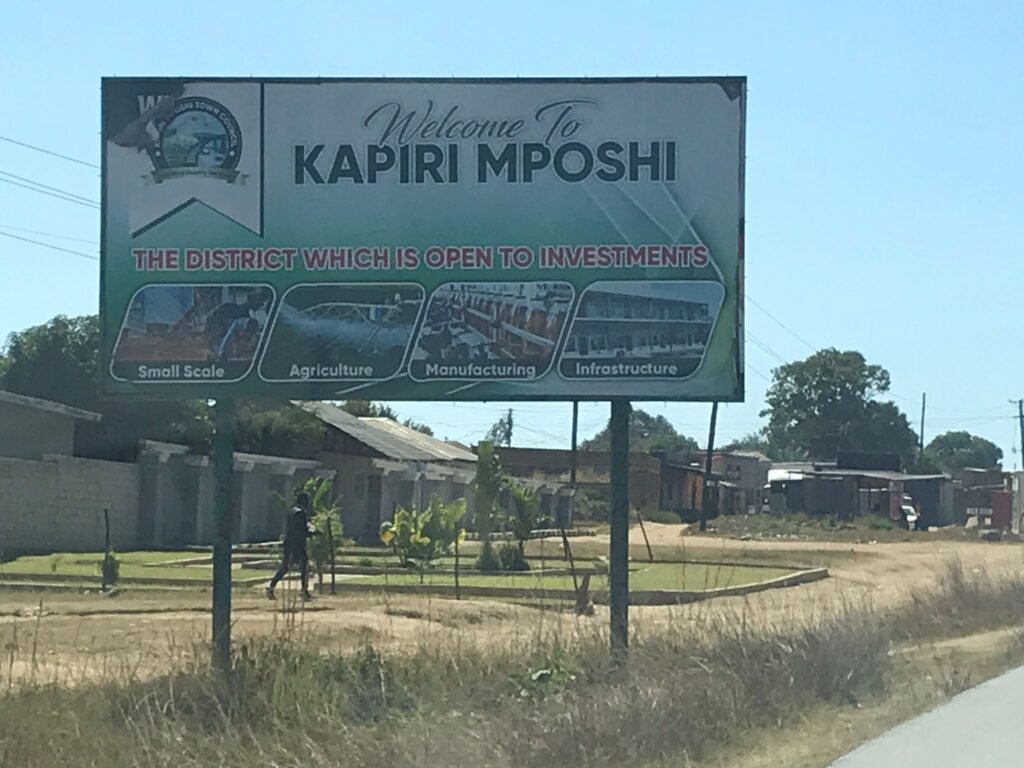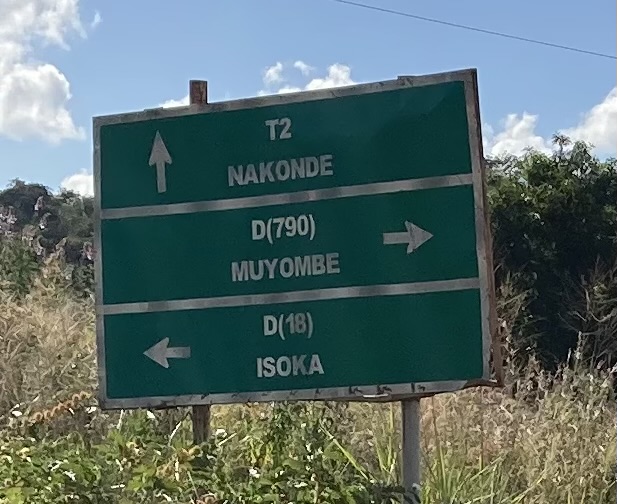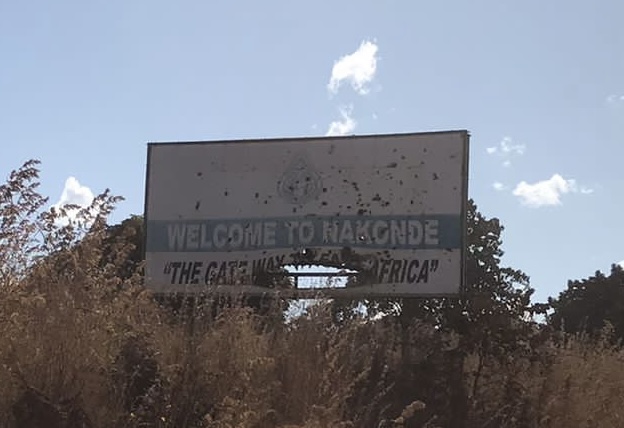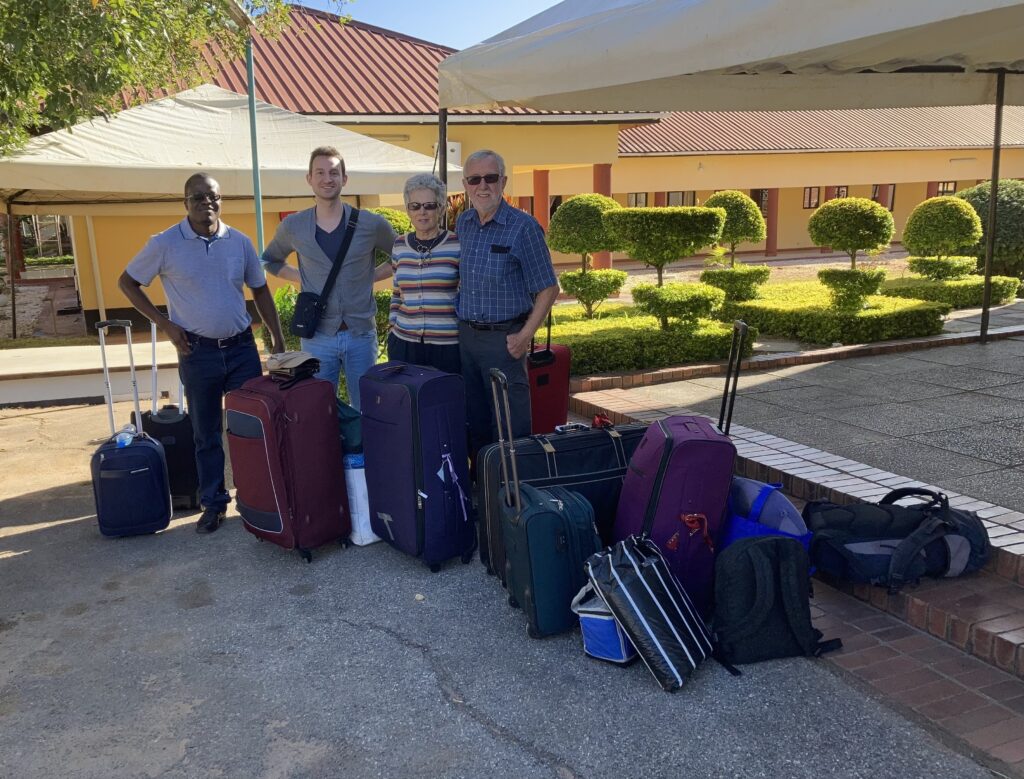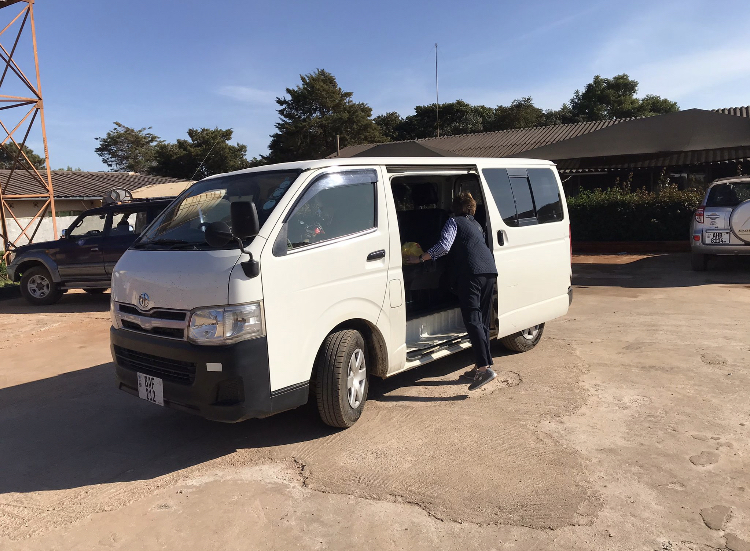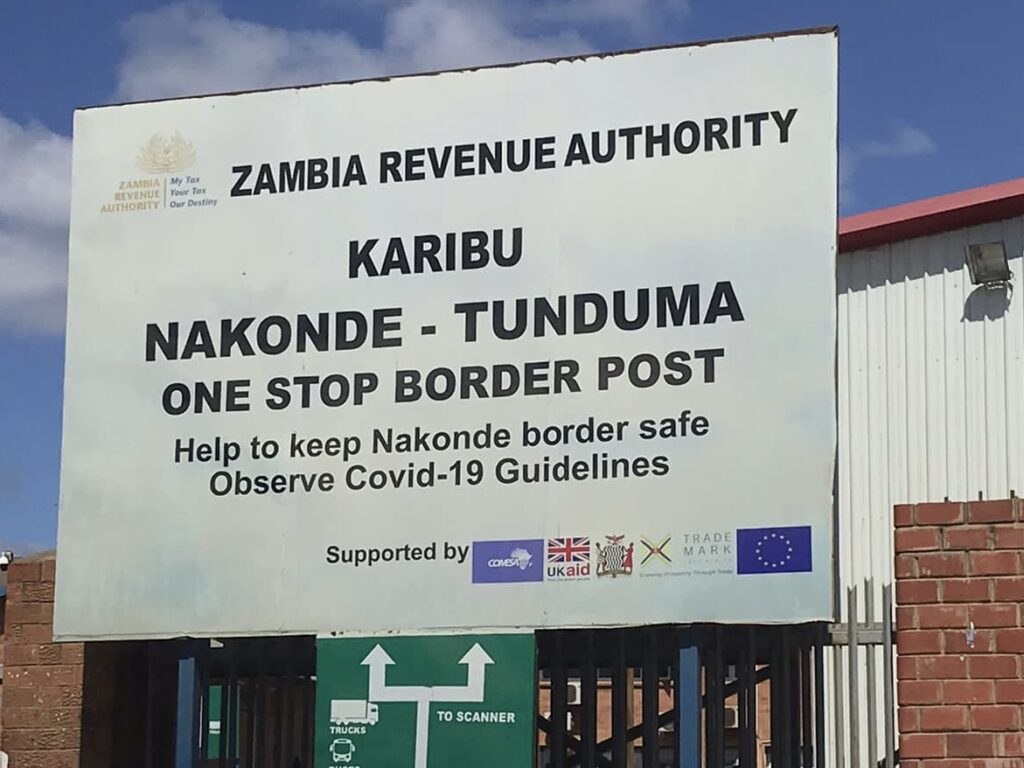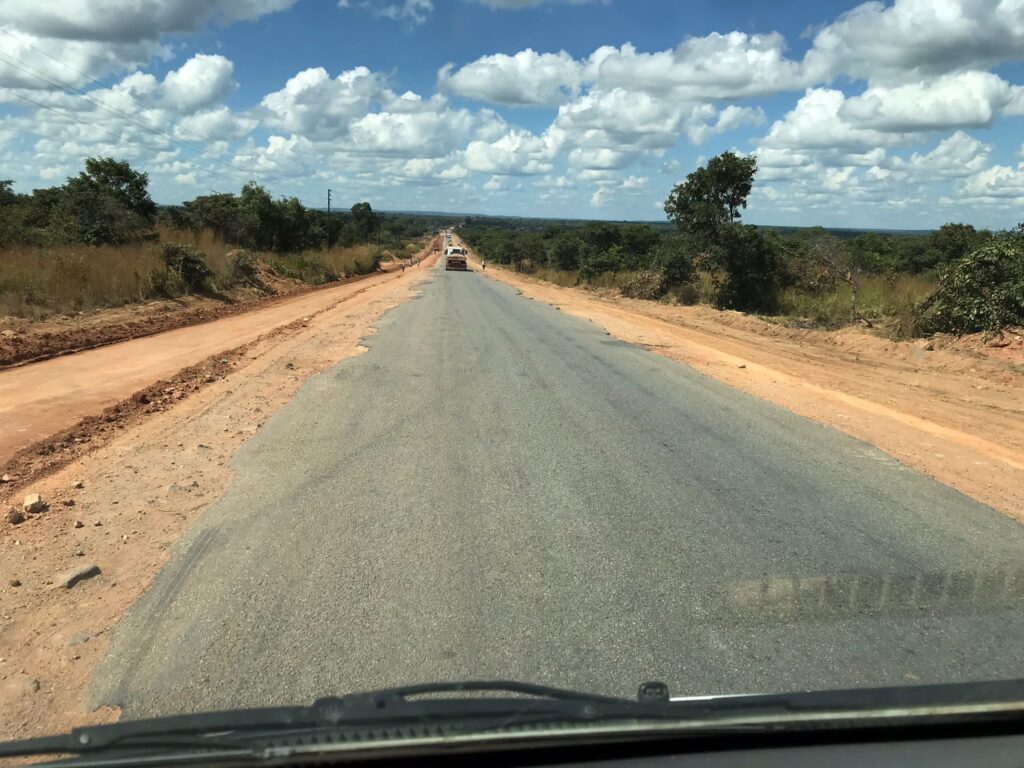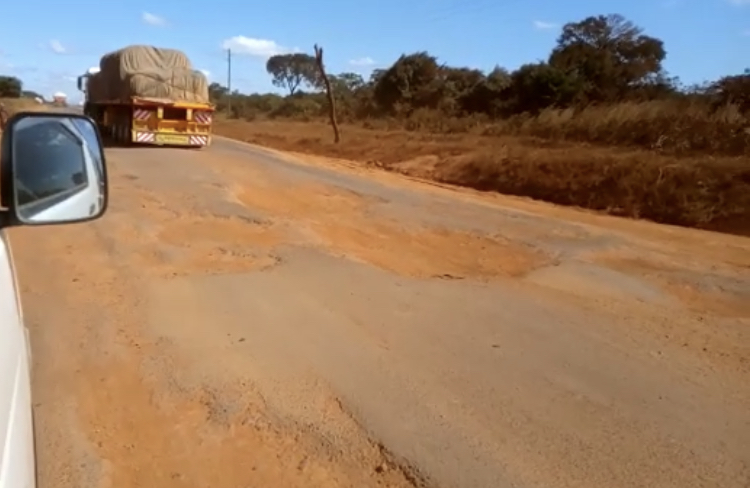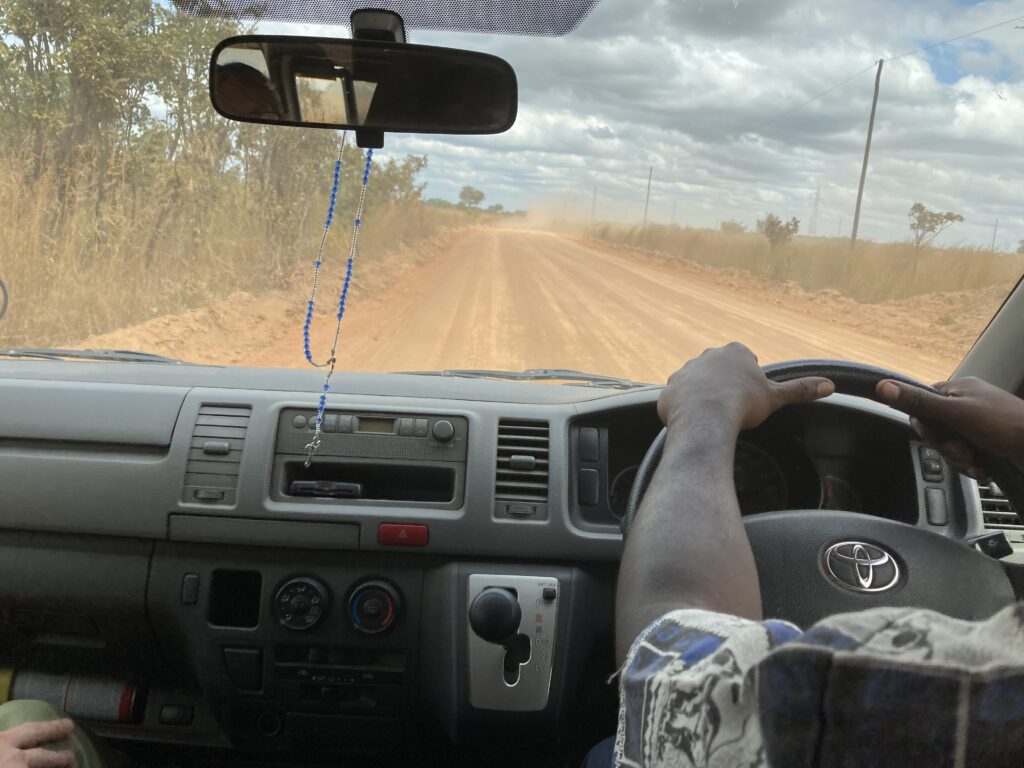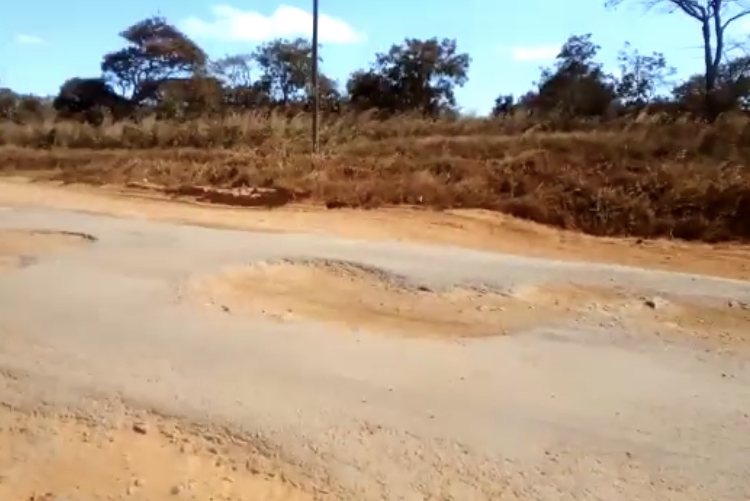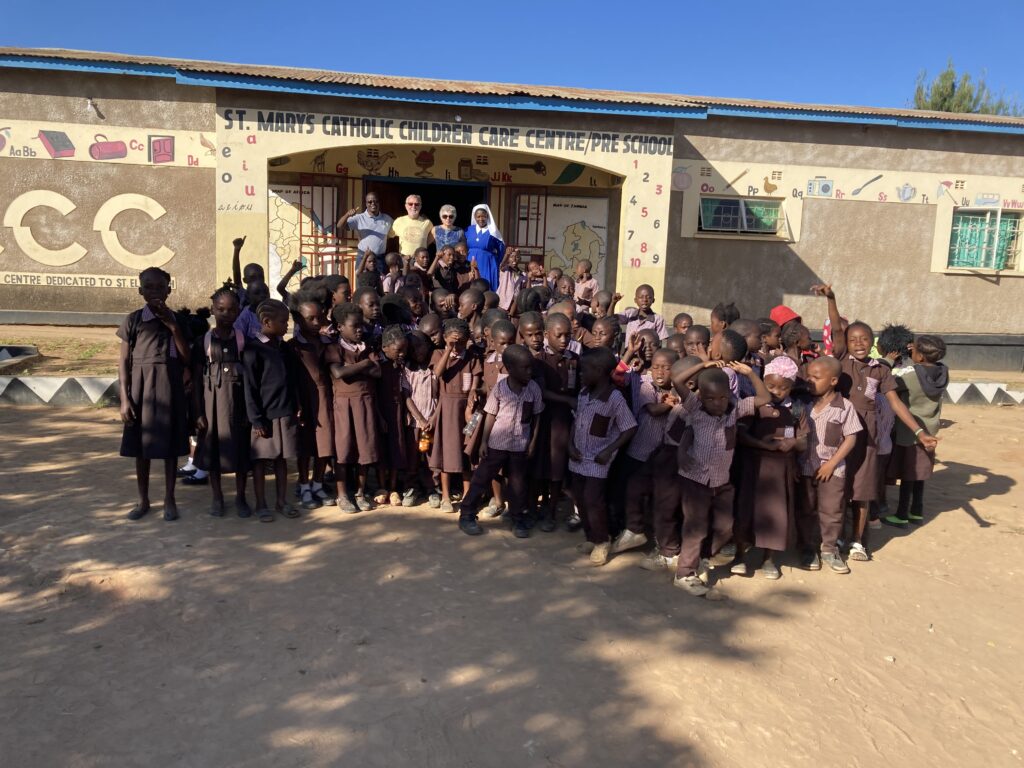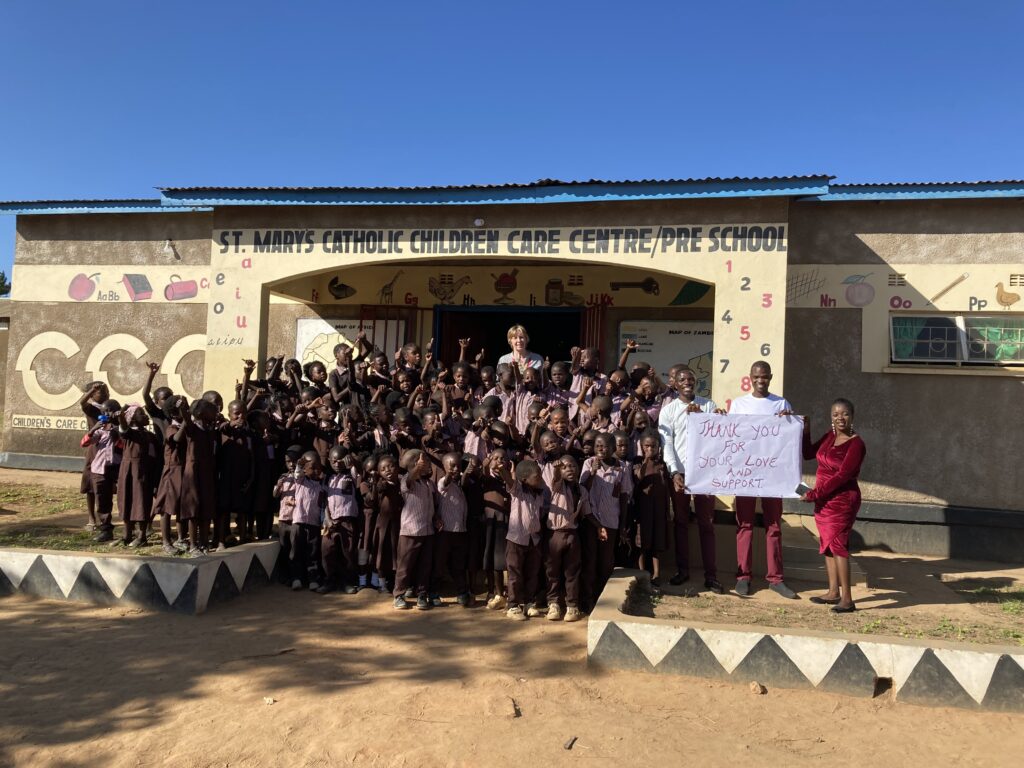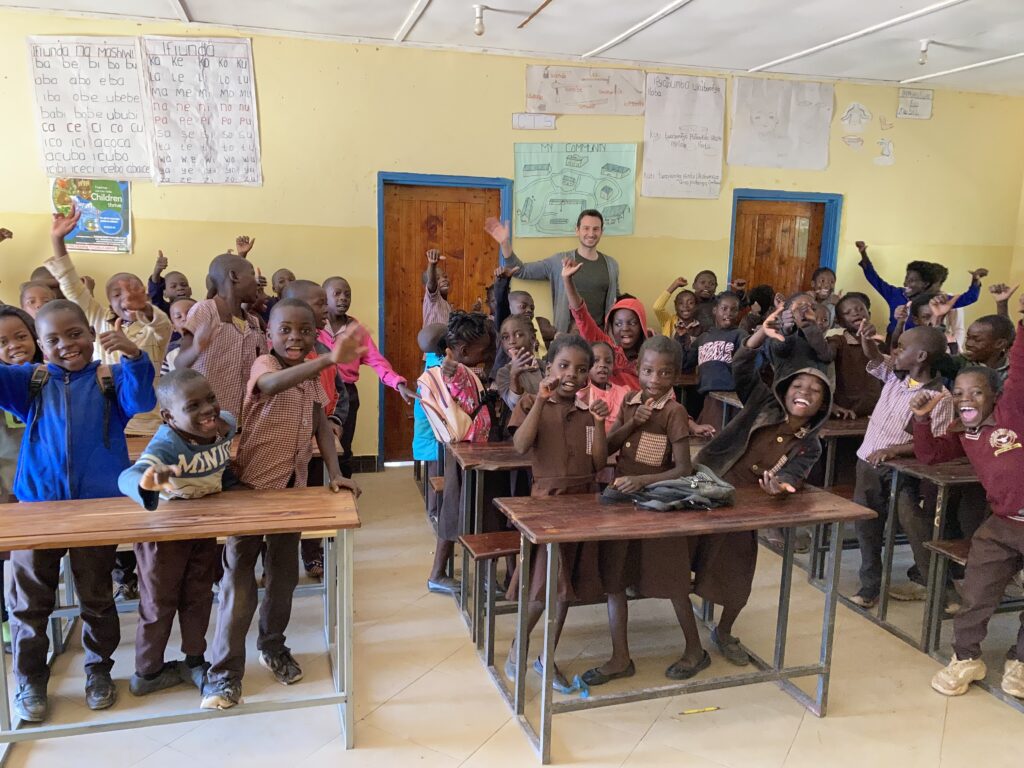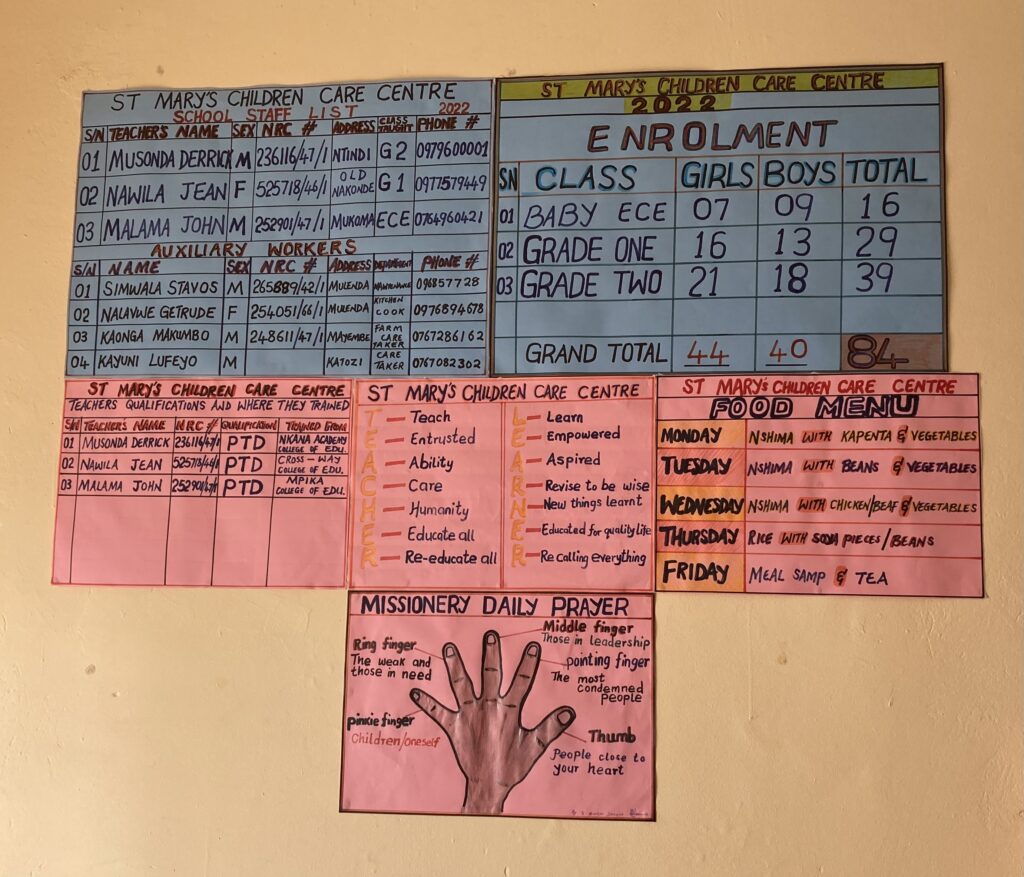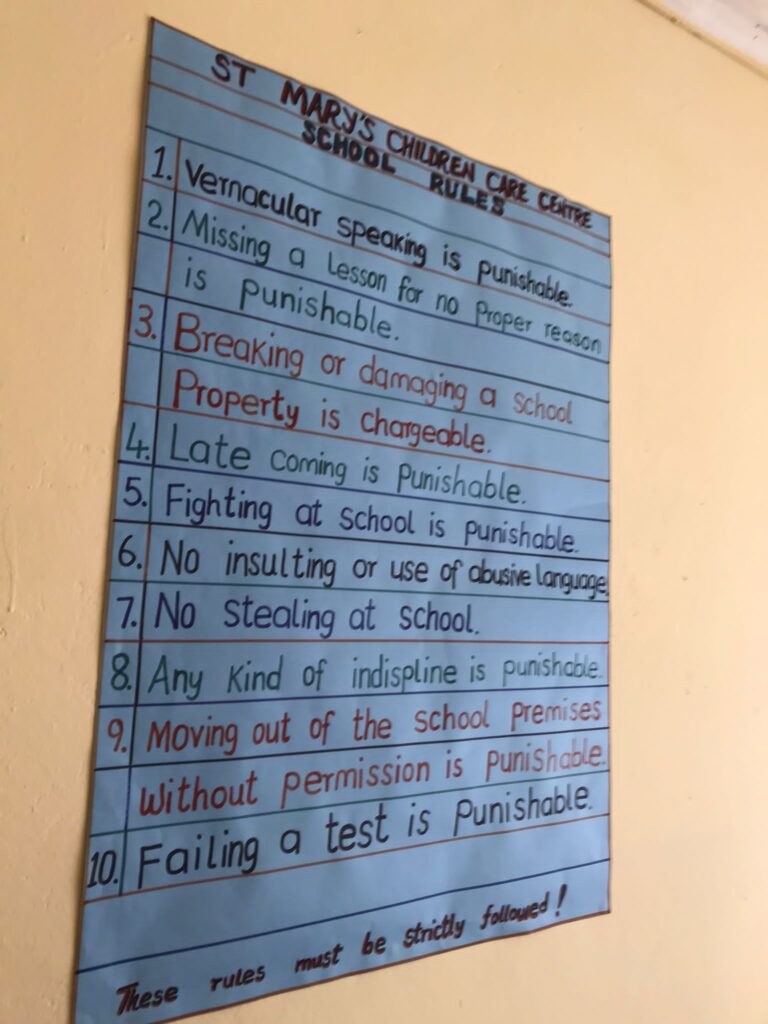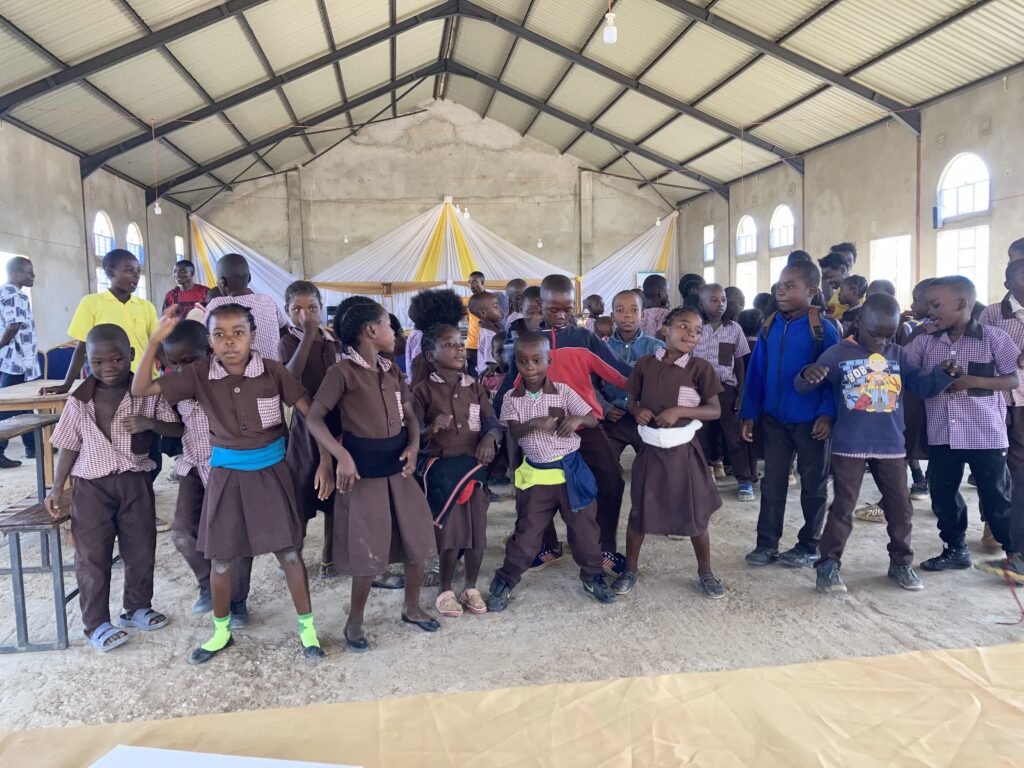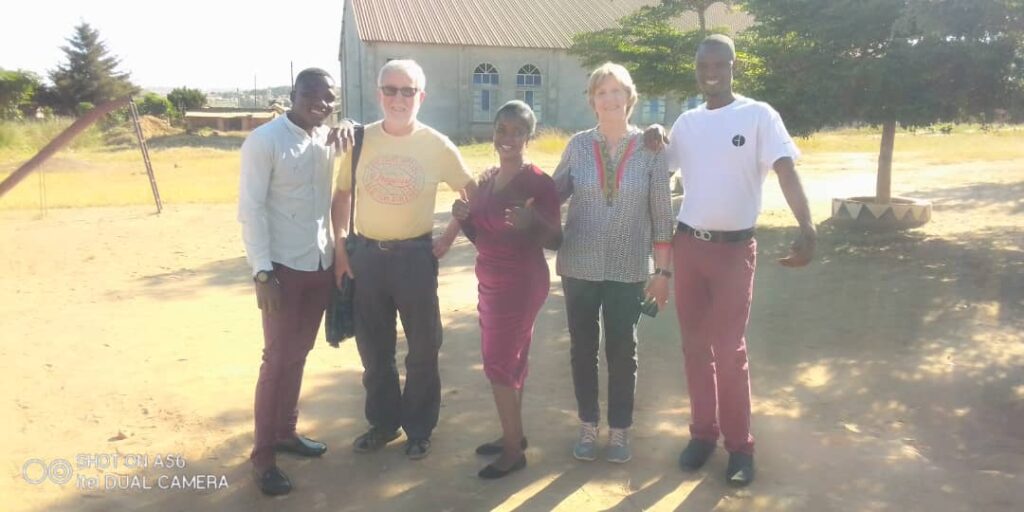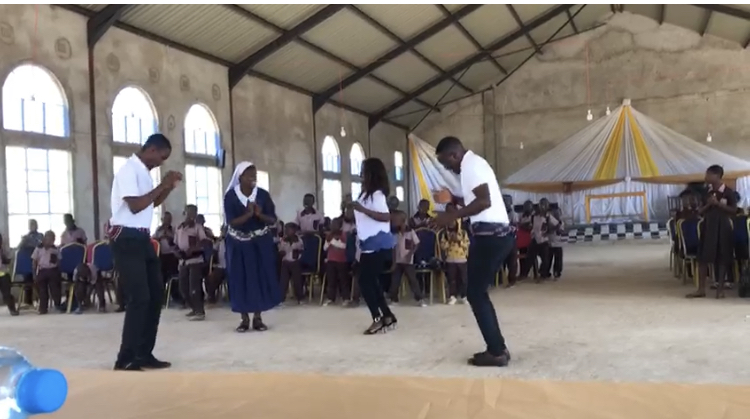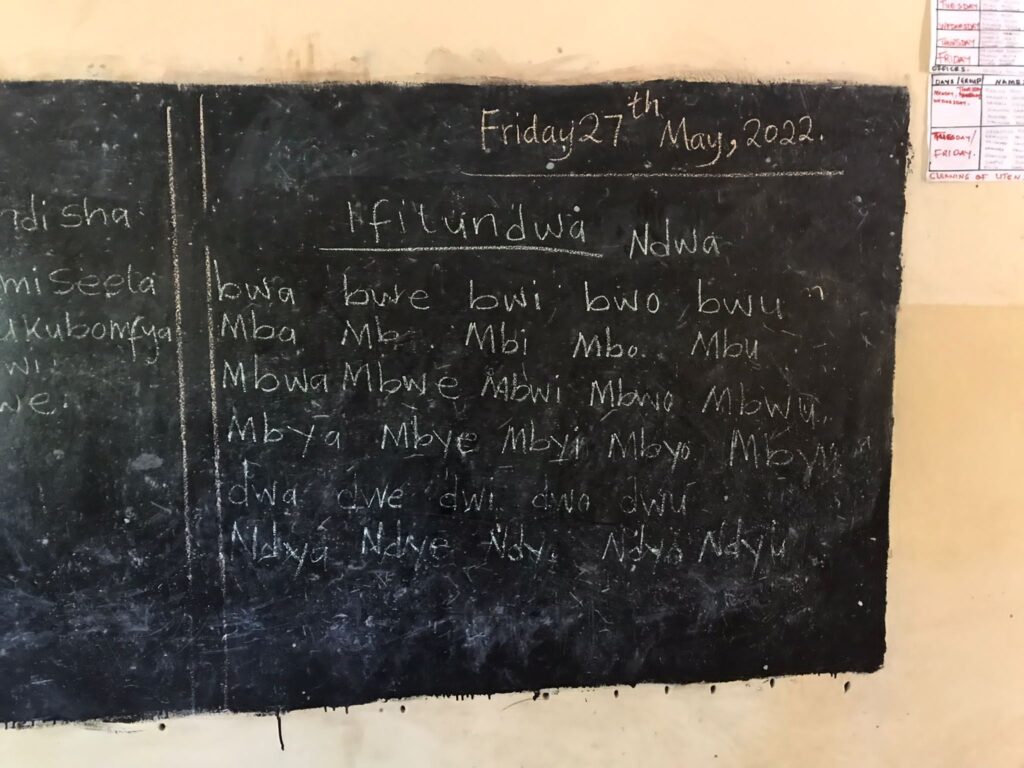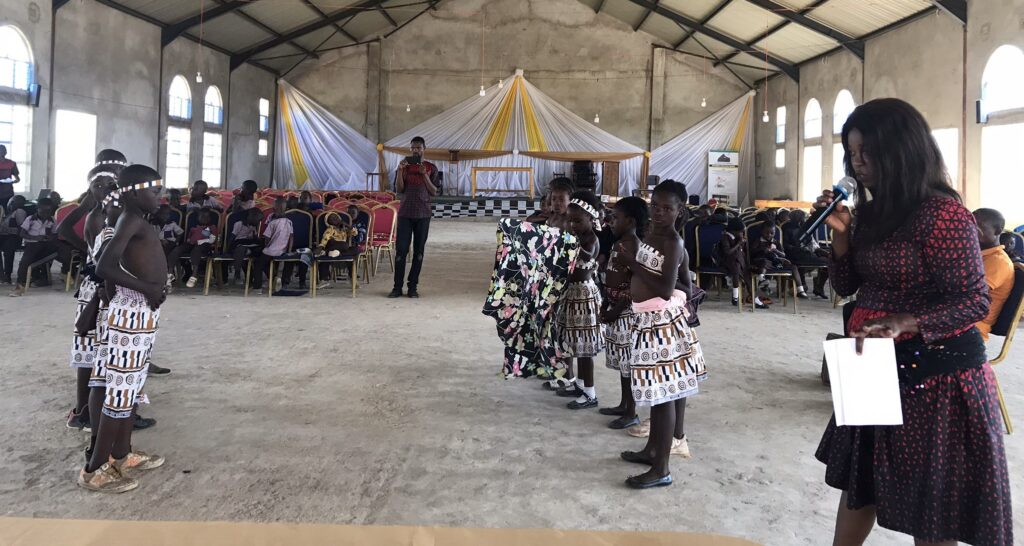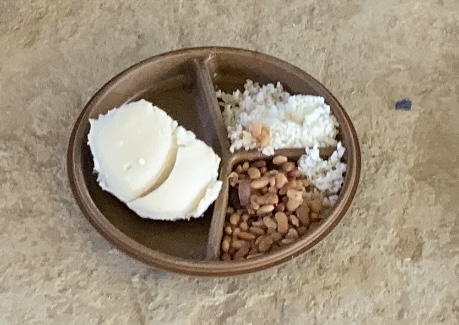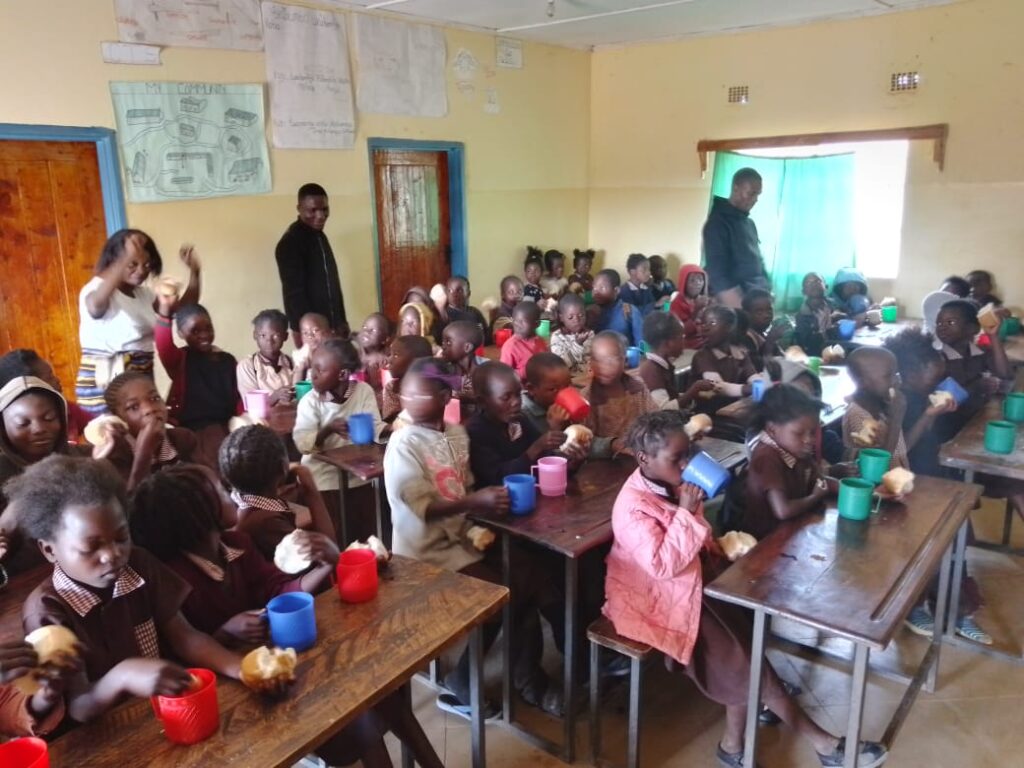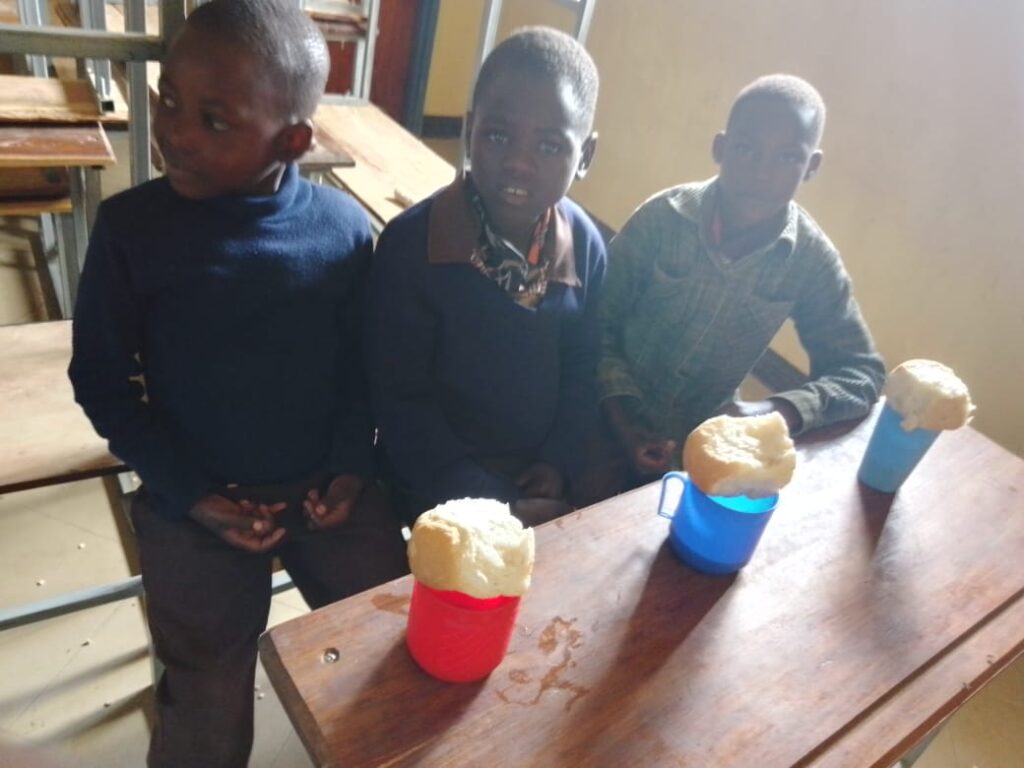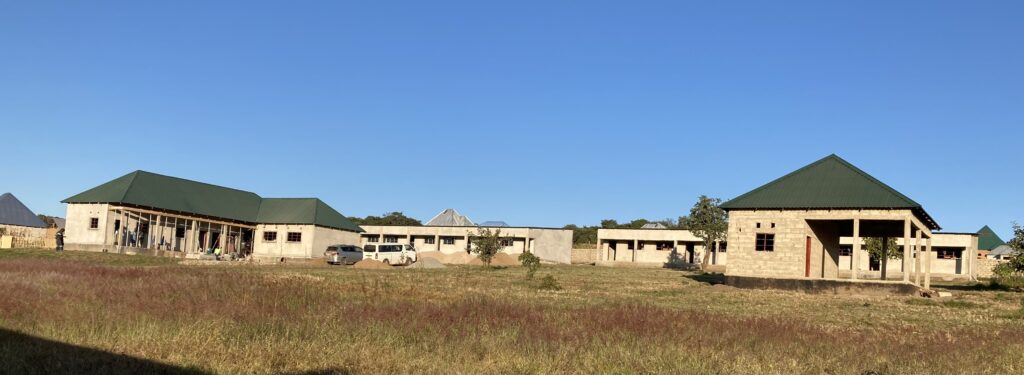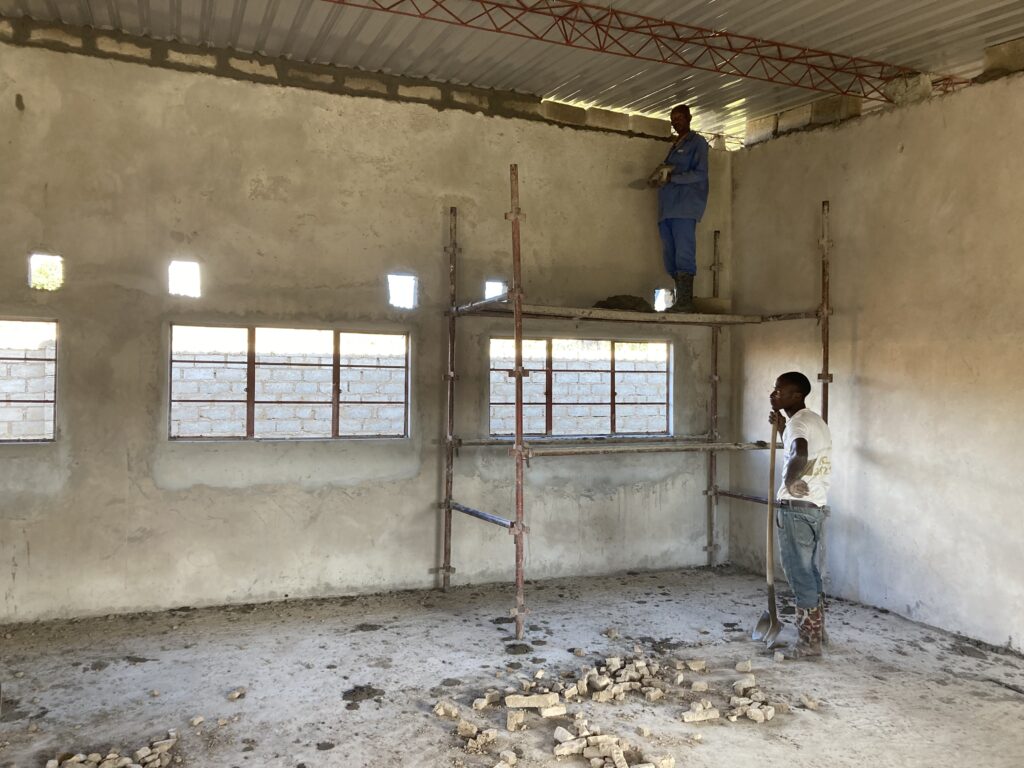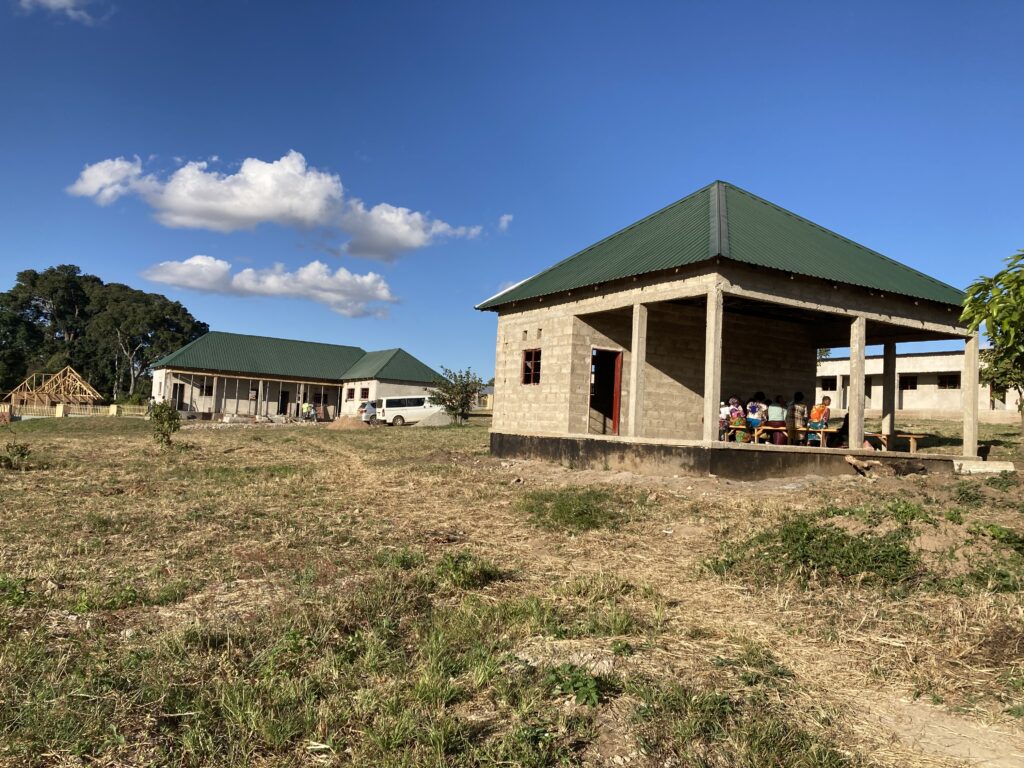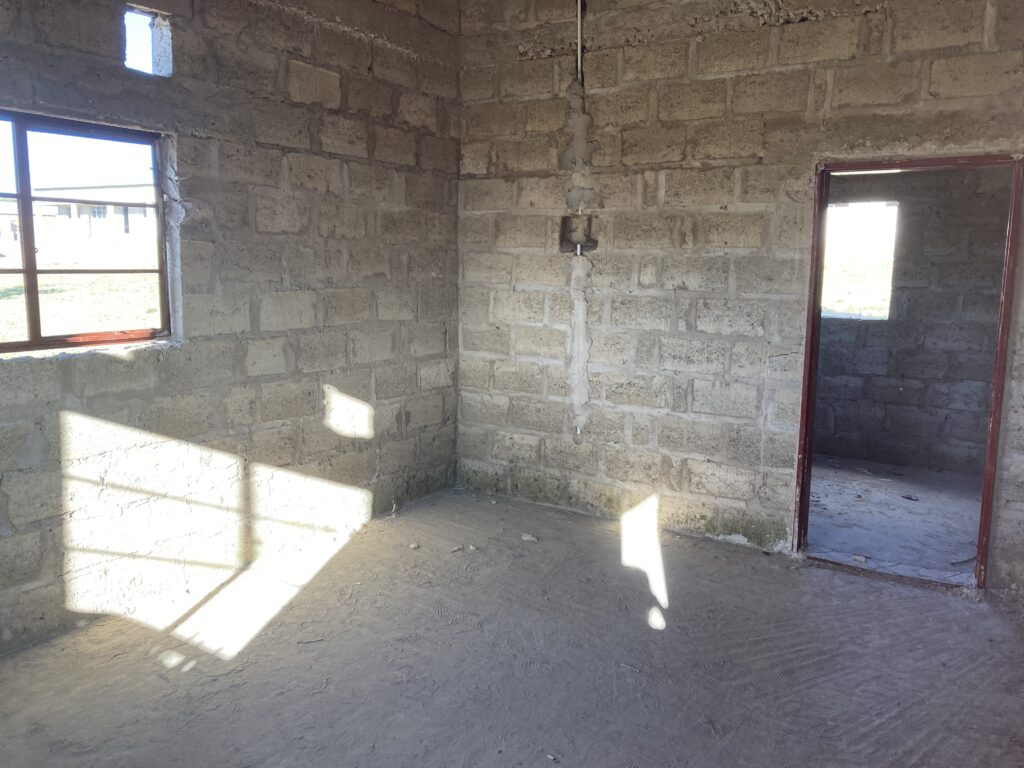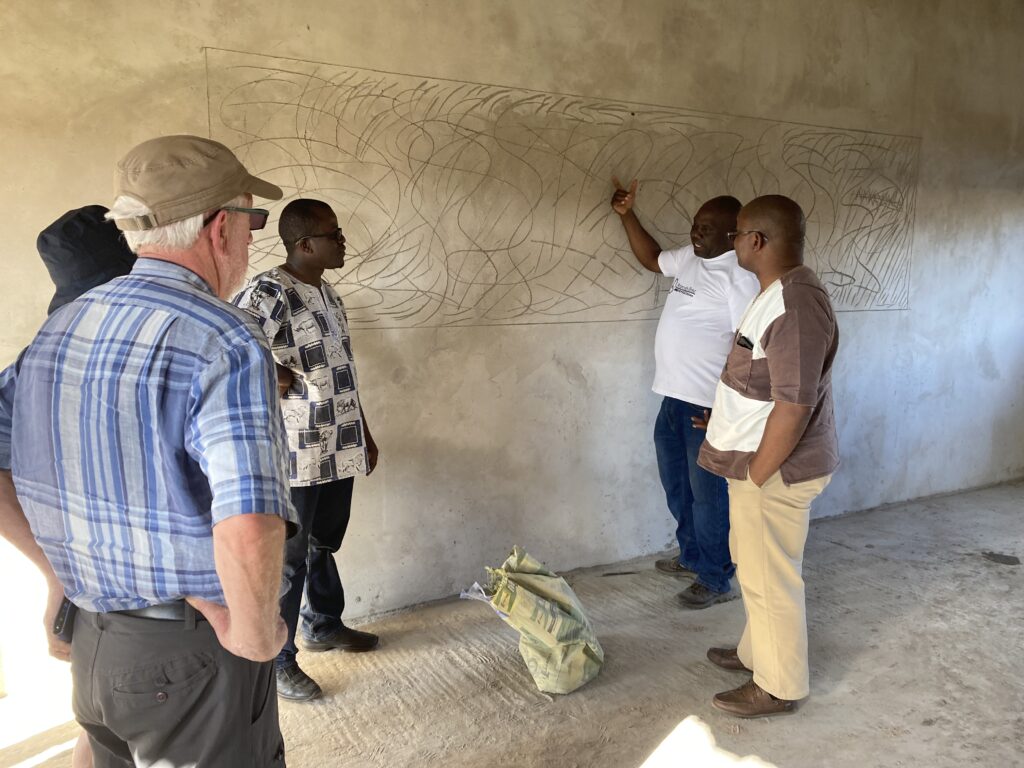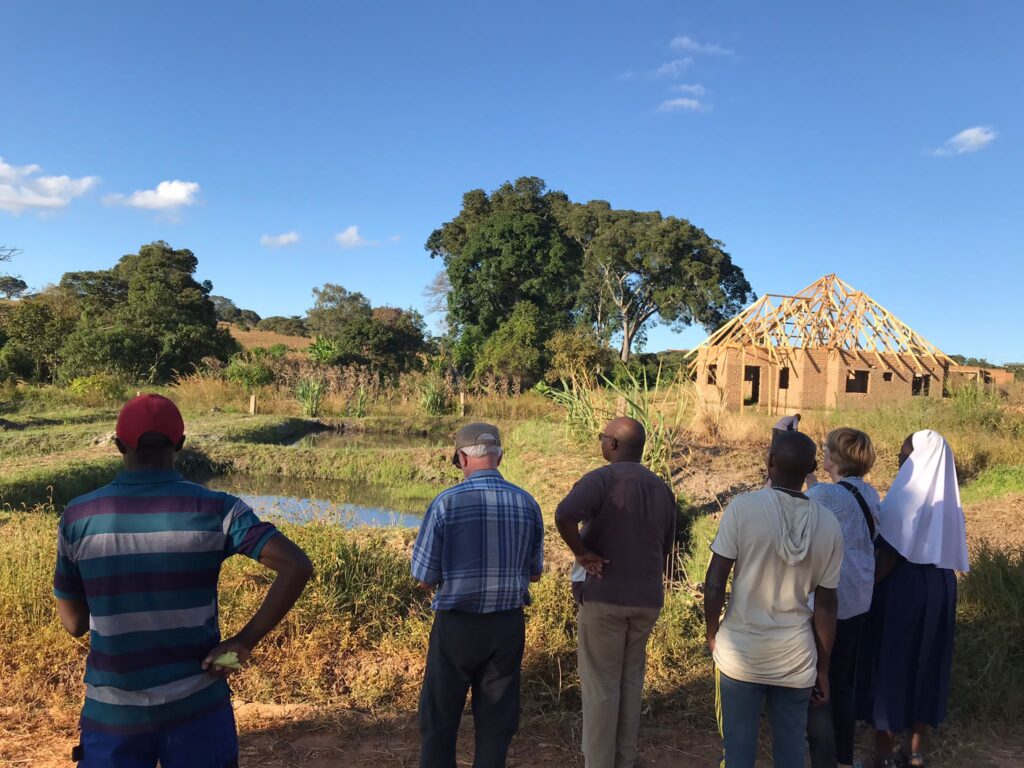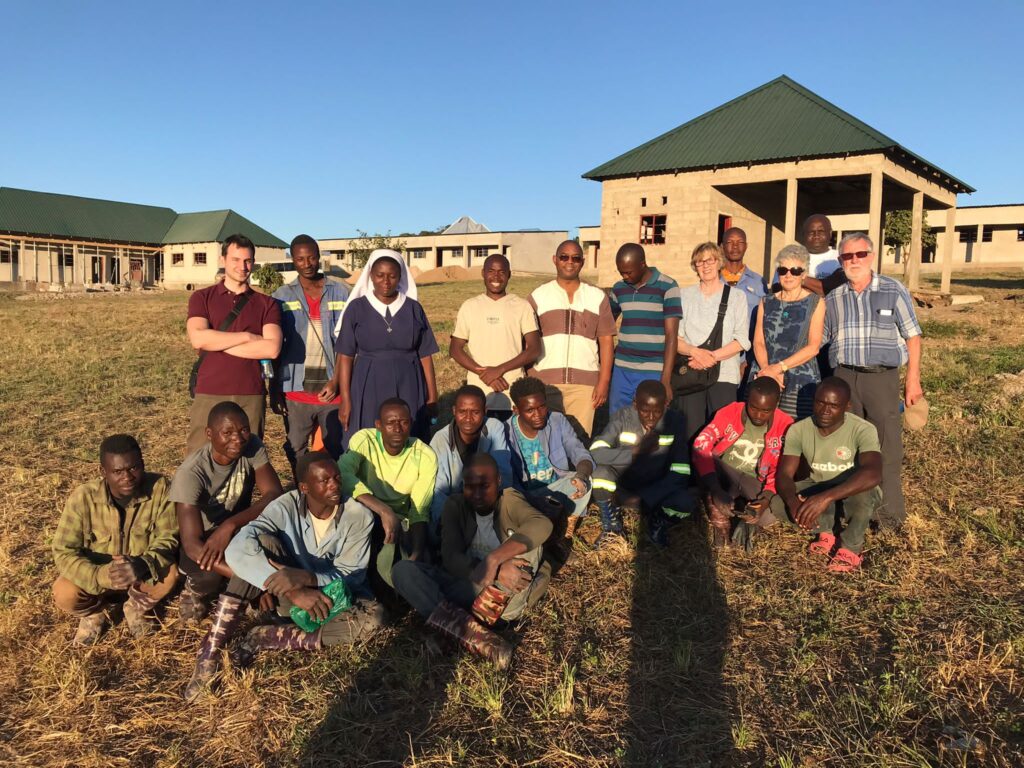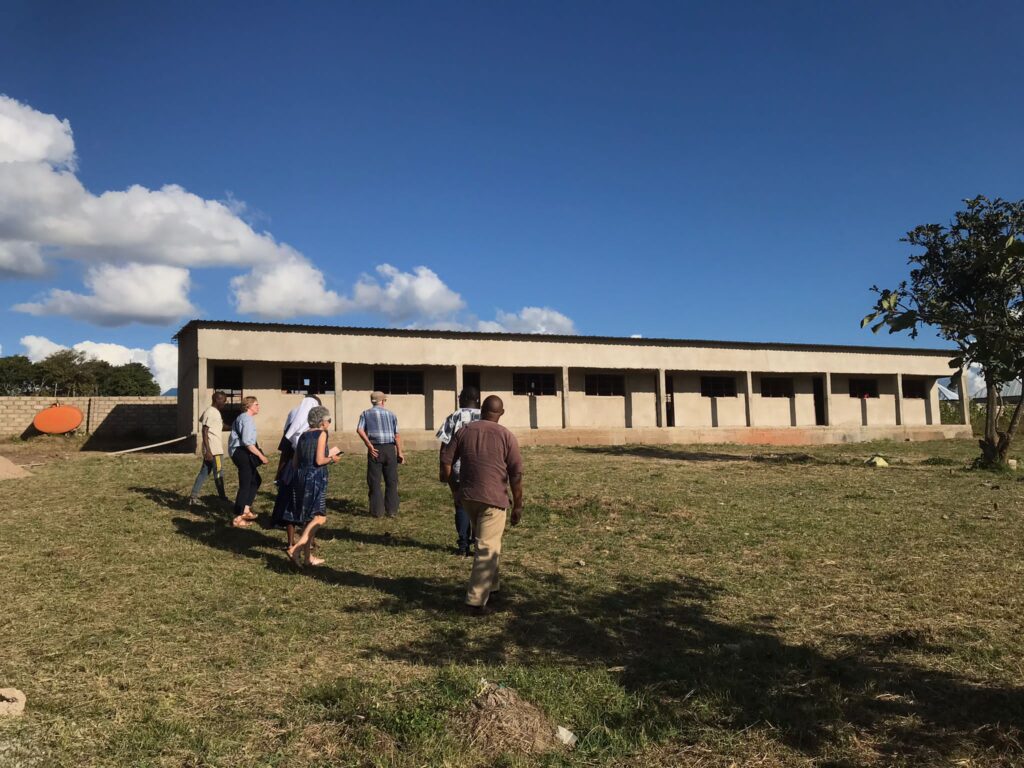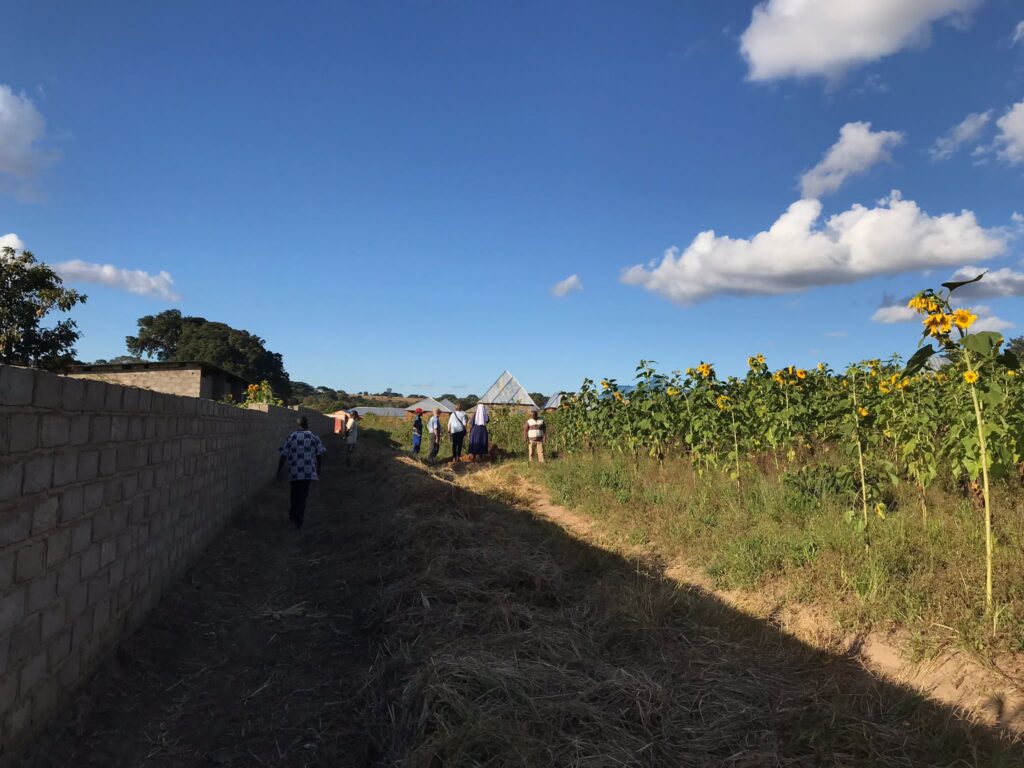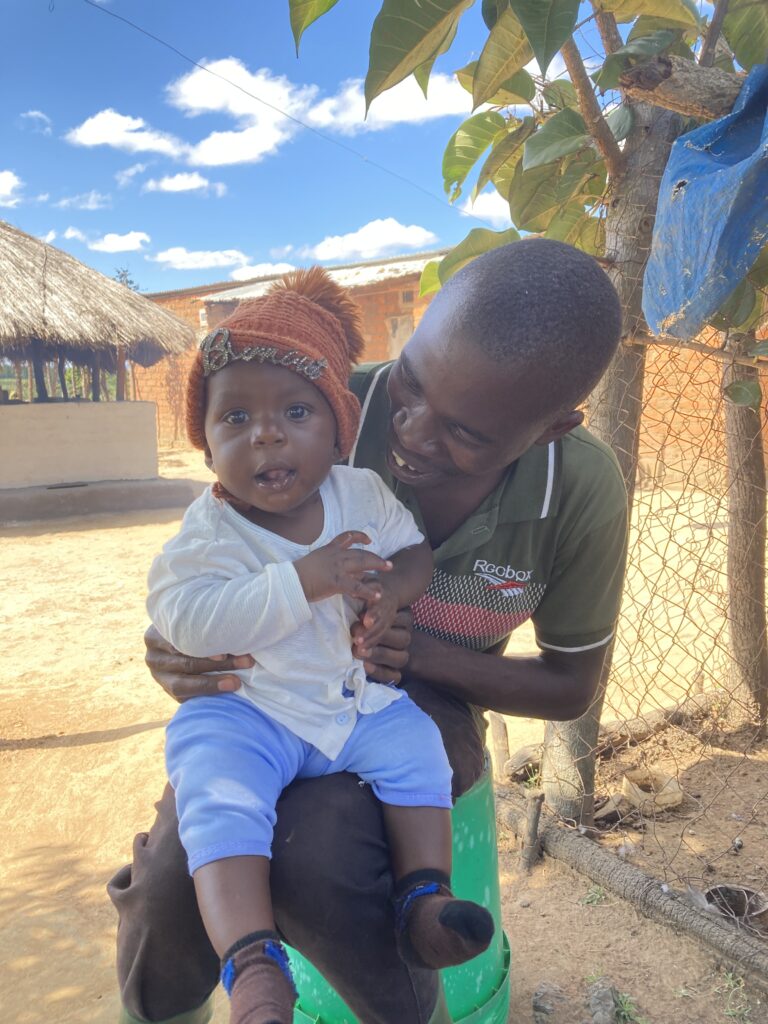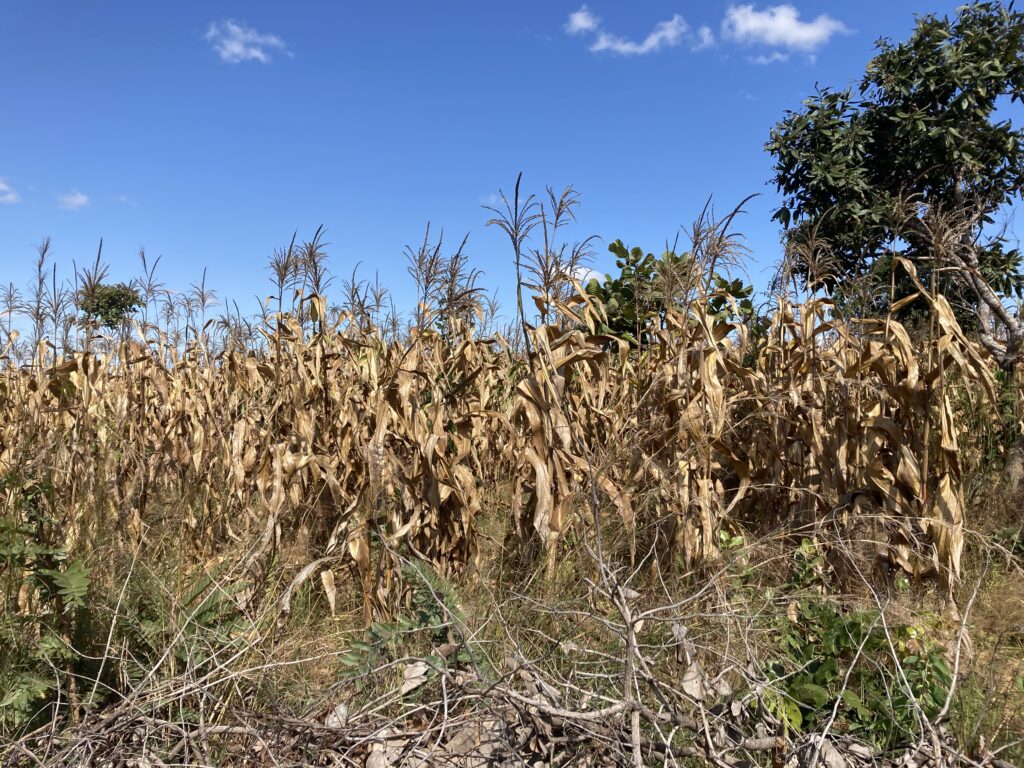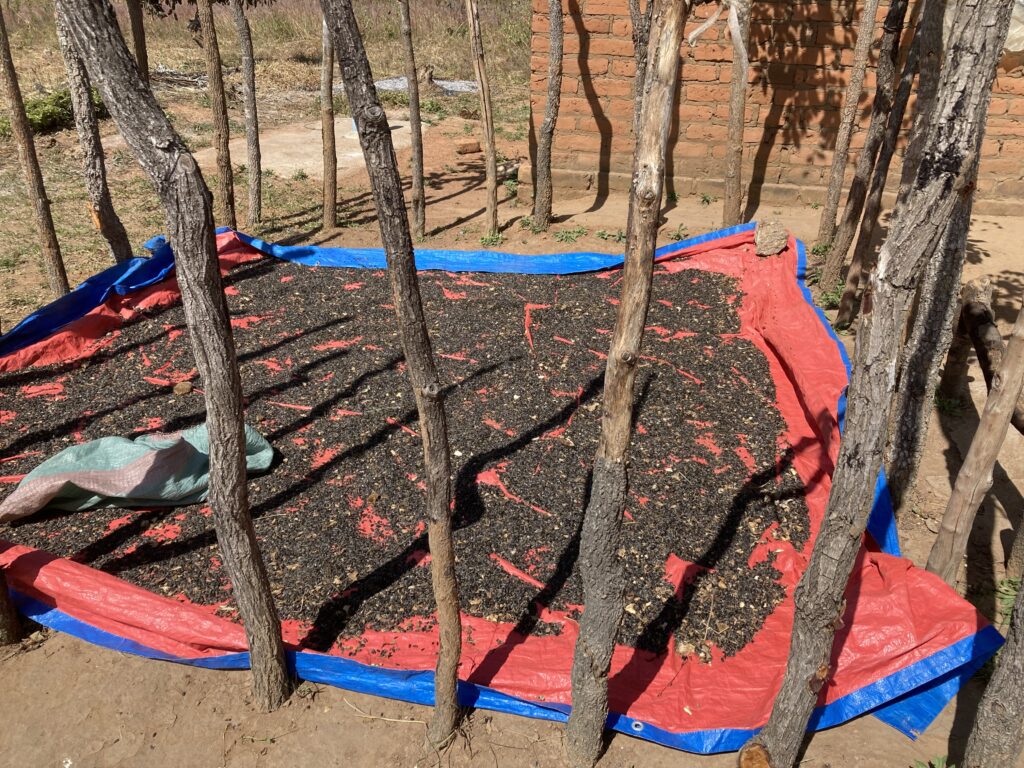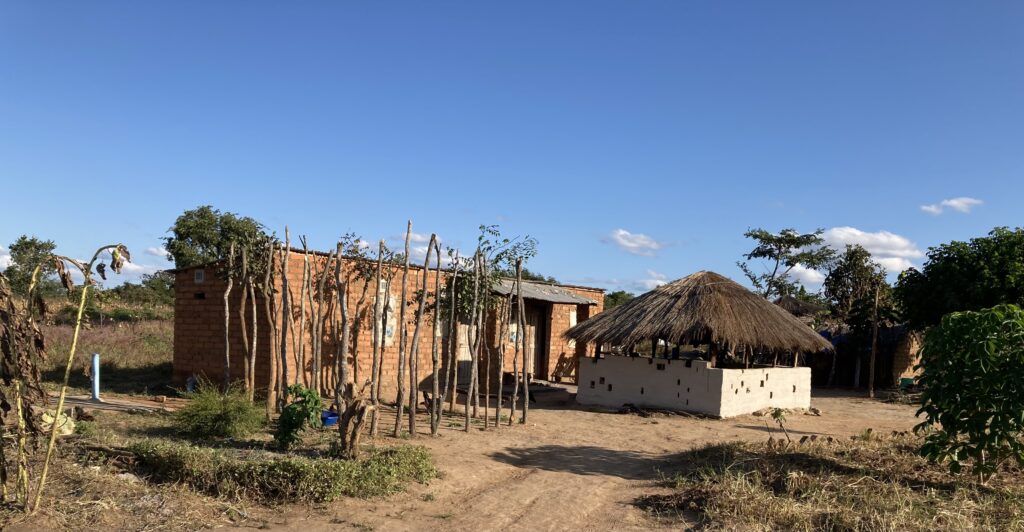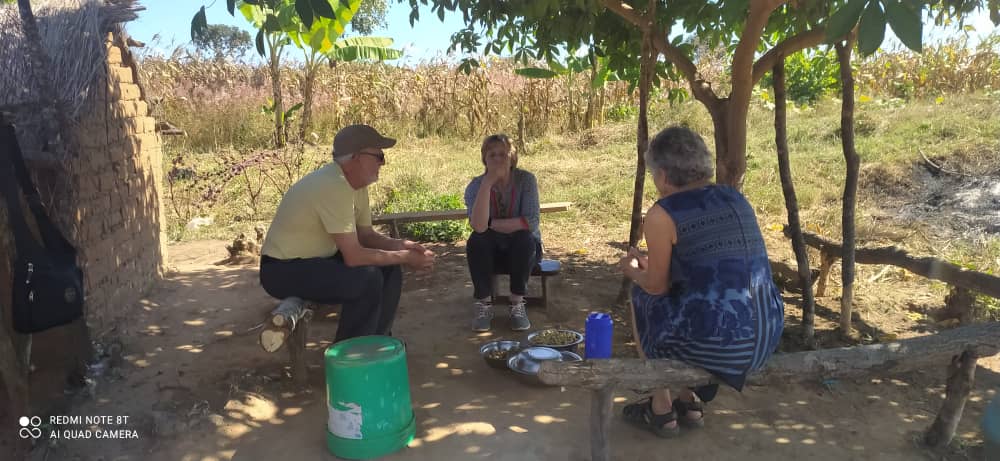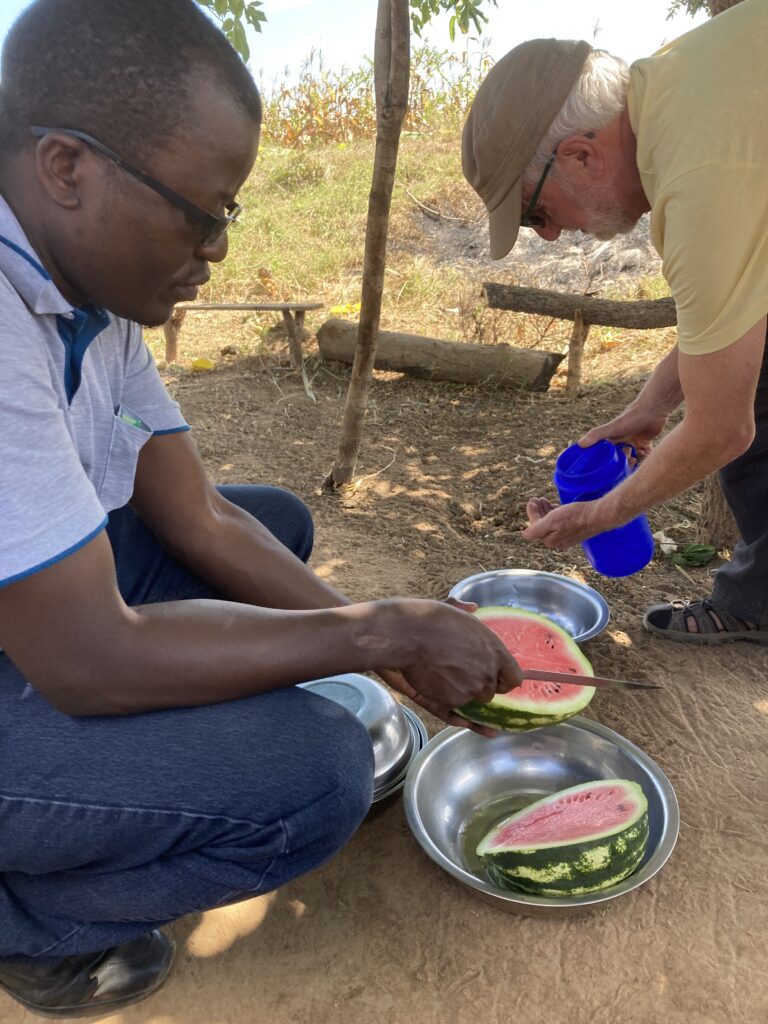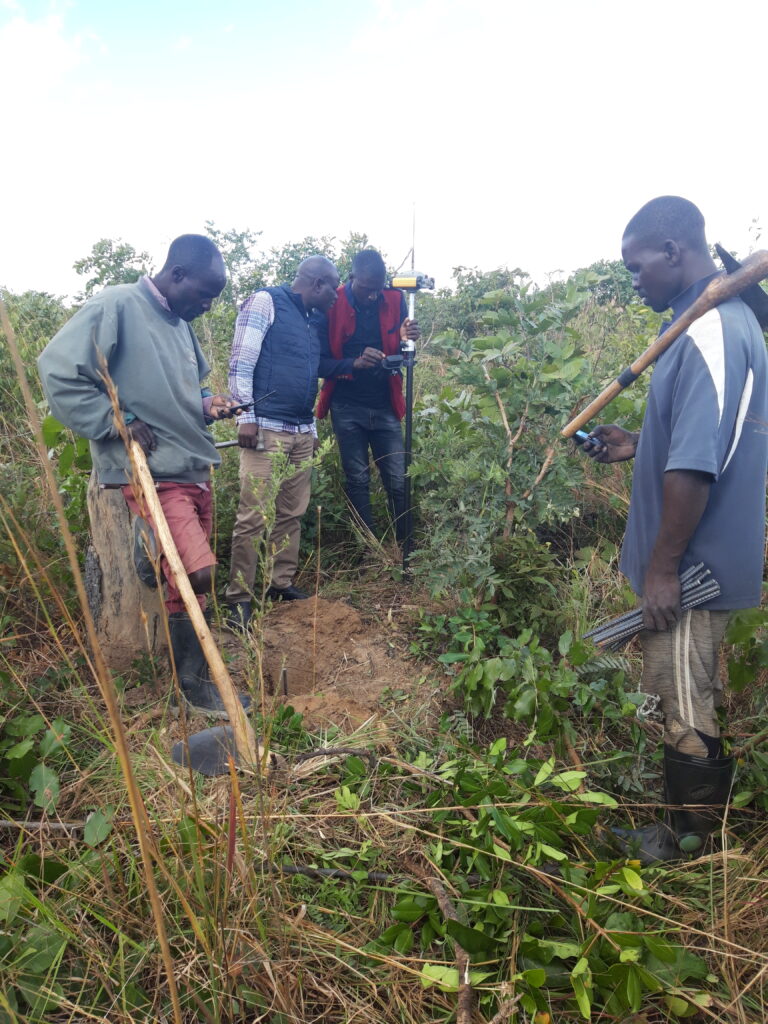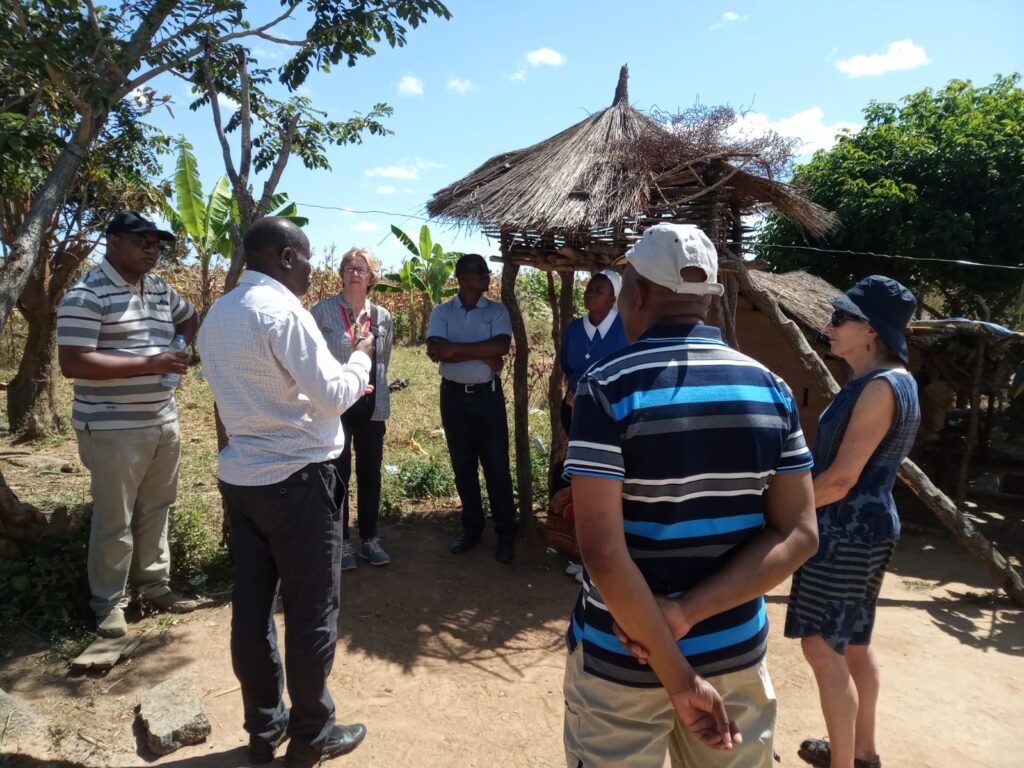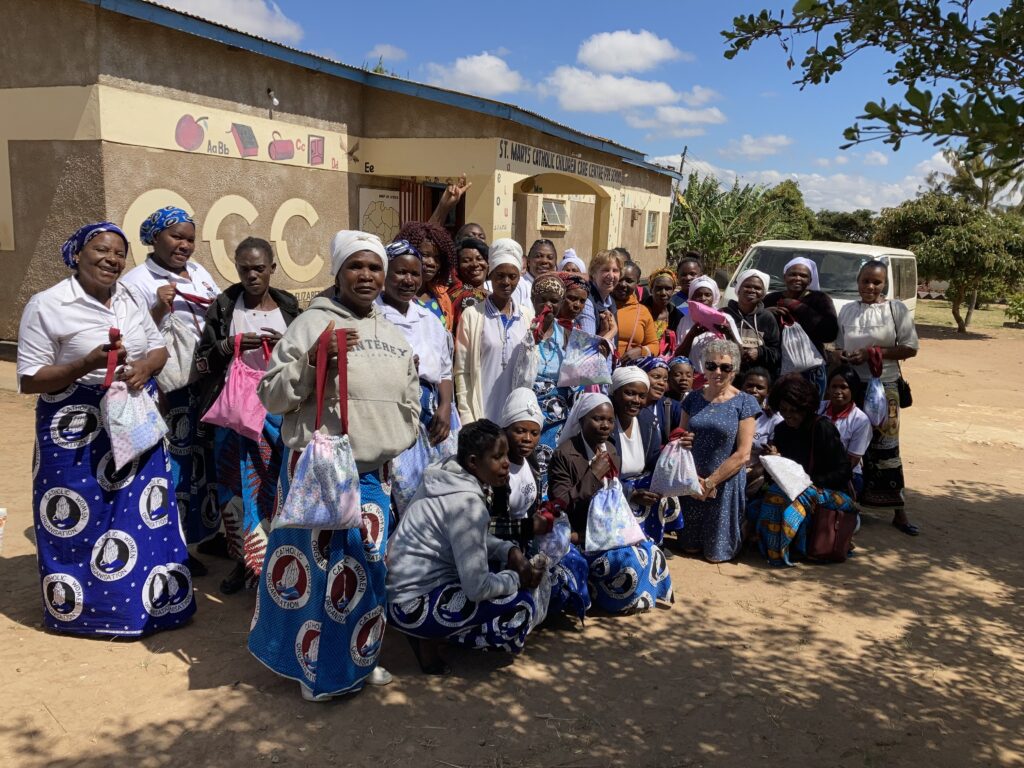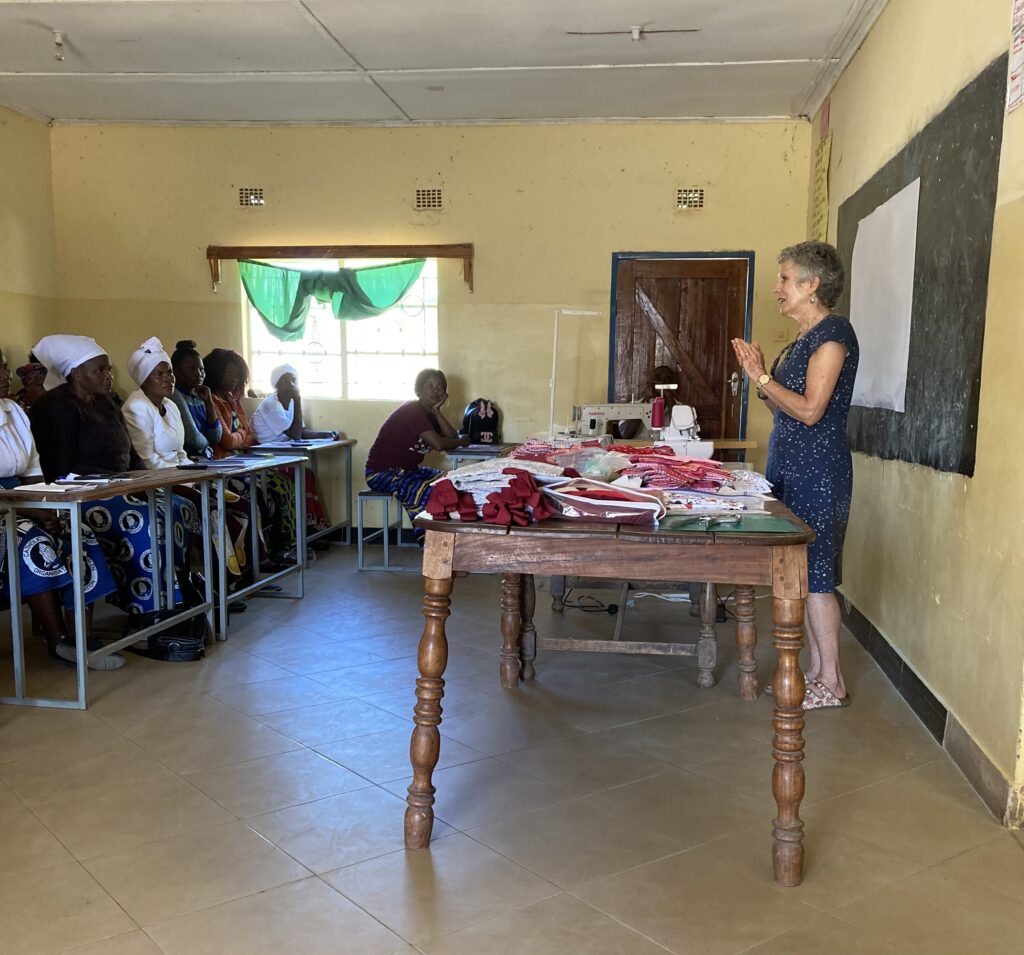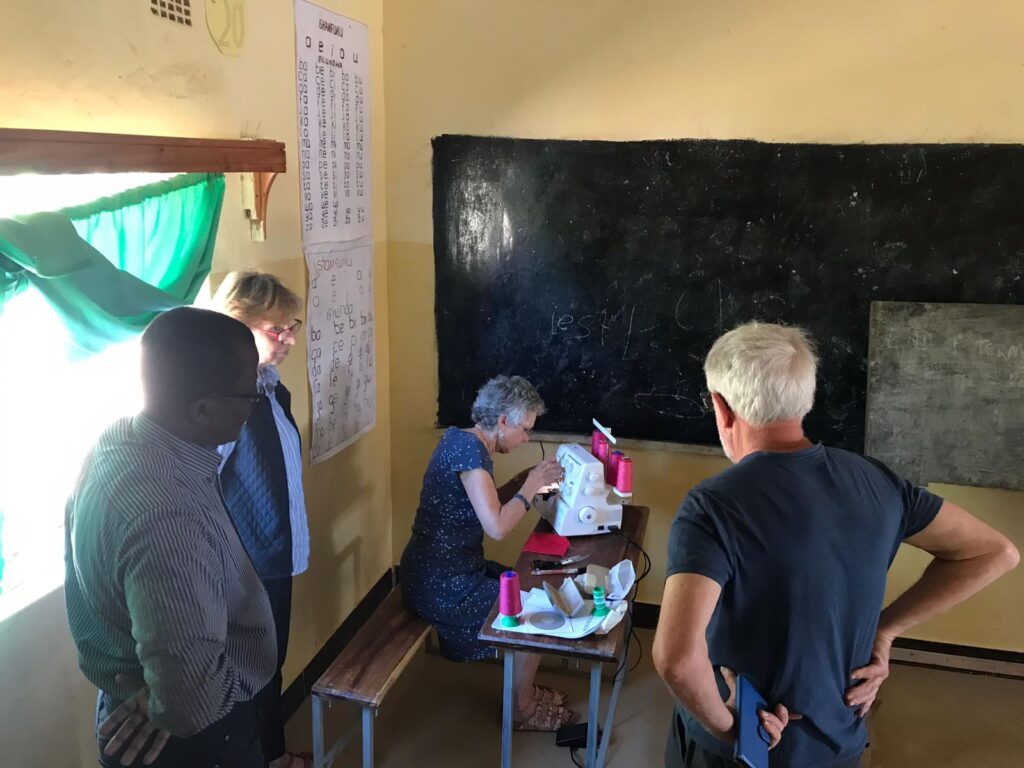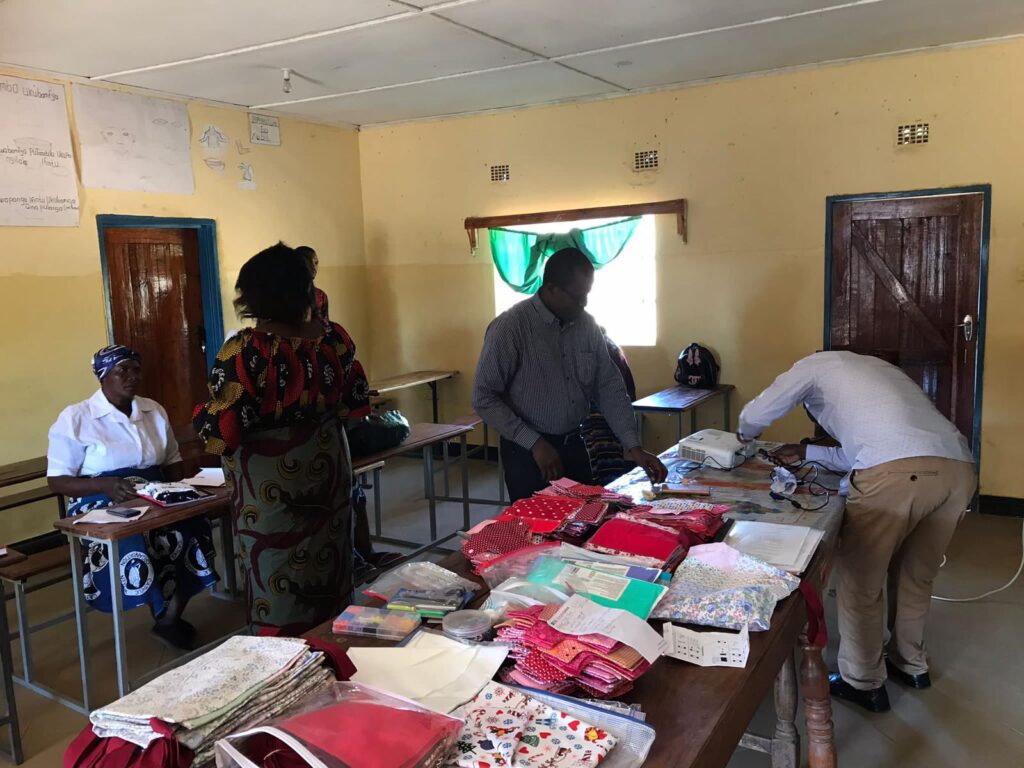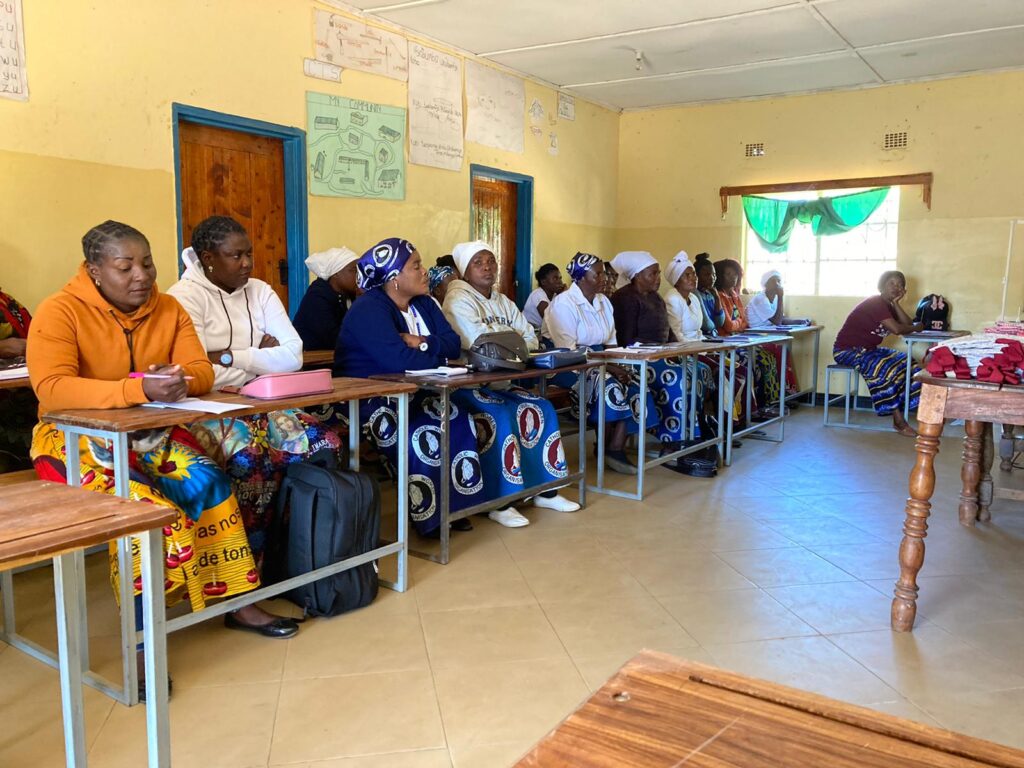It was a wonderful visit, above our expectations. We spent 6 days in Nakonde, each day was long and intense and very fruitful. We met old friends and made new ones and returned home very happy and satisfied.
The following accounts are not in order of importance.
ON THE ROAD
It took us 4 days to get to Nakonde. The easy part was getting to Lusaka but driving 1,016 kms on the Great North road was to say the least challenging!
It took 12 hours to drive from Lusaka to Mpika, then another 8 hours from Mpika to Nakonde. The road conditions in certain areas are disastrous and the steady stream of enormous trucks from Dar es Salaam to South Africa make it also hazardous. But we were in the safe hands of Father Nicholas who was a perfect driver and looked after us during all our trip.
THE CHILDREN at the CCC of ST MARY’S
It was wonderful to see the children and they were super happy and excited to see us!
They had prepared a party for us which lasted the whole morning – plenty of singing and dancing and games.
Most of the children are either single or double orphans. Some have parents but come from extremely disadvantaged backgrounds. The vast majority of Zambians (95.5%) are Christians of various denominations – the CCC centre takes children from all denominations, not only Catholic.
During this school year (January – December 2022), the 84 children are divided into 3 classes –
⦁ 16 “Babies” pre school – 5/6 years old (7 girls, 9 boys) Teacher – John
⦁ 29 pupils Grade 1 primary school – 7/8 years old (16 girls, 13 boys) Teacher – Jean
⦁ 39 pupils Grade 2 primary school – 8/9 years old (21 girls, 18 boys) Teacher – Derrick
Teachers Jean and Derrick are fully qualified and John is completing his studies thanks to the sponsorship of the Bridge of Friendship. We are very happy with their service as they truly care about the children and personally seek out the most vulnerable and encourage them to come to the centre.
John and Derrick also hold adult literacy classes every evening at the centre and Jean is a key player in our Menstrual Hygiene programme.
FEEDING PROGRAMME
The children get a meal at the end of the morning lessons at approximately 1pm. However, the teachers told us that most of the children arrive at the centre hungry as they don’t have breakfast. As a result they fall asleep and it’s difficult for them to concentrate.
It takes about Kwacha 120 (€6/7) to provide breakfast (a cup of tea and a bread bun each) for 84 children on a daily basis. We are now providing breakfast from Mondays to Thursdays. On Fridays the day ends earlier and the children get their main meal about 10.30am. Based on the number of remaining school days until the end of the academic year on 14th December 2022, we have calculated it will cost us about €650 to give the 84 children breakfast.
It’s the cold season now and the minimum temperature can reach 9°C so the children are very happy to get a mug of hot tea when they arrive (see photos below).
It’s worth noting that many of the children will get nothing more to eat until they return to the centre the following day. For the families/guardians the children have already had enough to eat.
Some photos taken at the centre and during the party.
THE CHILDREN’S STORIES
Margaret (fictitious name)
Margaret arrived at the CCC centre when she was 11 years old, she had never been to school before. When her father died her mother remarried but the stepfather beats Margaret and her siblings regularly. The stepfather also has children from a previous marriage. He doesn’t work, the mother tries to make some money from cleaning. Margaret is bright, active and helpful at the centre.
Stephen (fictitious name)
Stephen’s parents both died from AIDS. He and his 3 siblings live with their grandmother. The grandmother’s only income is selling tomatoes at the side of the road and competition is fierce. Stephen doesn’t always come to school on a regular basis – his siblings never come to school, they’re not interested so they live on the streets.
THE NEW PRIMARY SCHOOL AT ST MARGARET’S
The new school is about 4 kms from St Mary’s. Children are used to walking many kms to and from school. Even very young children walk on the side of the road, including the very dangerous Great North road. This is something we would never think of allowing our children to do!
We had followed the construction work through photos but to see it in person was very satisfying. We were able to understand the lay out better.
The foreman, Mr Andrew Nyoka and the worksite engineer showed us around.
It all looks very well.
The girls’ toilets have a special room for menstrual hygiene – this ties in with our menstrual hygiene programme (see our workshop news).
We had a very useful meeting with the local DEB (District of Education) officer, Mrs Ireen Kambalakoko. We need their authorization to open the school in January 2023. The crime rate in Nakonde is very high as it’s a border town so they told us we need to get “burglar bars” on our admin building and probably the classrooms too.
They also said our toilets are too far away for the youngest children in grades 1 and 2 so we have to build a few toilets near their classrooms.
The school shares the land, which belongs to the Mpika Diocese, with the church of St Margaret’s. We have fishponds and various cultivations outside the walled property.
We need to fence the area behind the school which will be dedicated to sports activities.
THE CHILDREN’S FUTURE
From January 2023 the centre at St Mary’s will return to its original function as a day care centre and preschool for children of 4 – 5 – 6 years of age. We will probably have an intake of about 60 children.
The Sisters of Our Lady Queen of Africa are the “managing agent” and as well as running the CCC at St Mary’s and the food programme they will also be the managing agent at St Margaret’s school. The teachers at St Margaret’s will be made up of lay teachers and qualified Sister teachers.
St Margaret’s is a government aided school which means the government will pay for the teachers. At St Margaret’s we will be expected to take in other children from the community to satisfy the government’s standard of at least 50 children per class. Recently the new government introduced free education for all children which now means some schools have 70/80 even 100 children in a class!
We are determined to continue our food programme for the most vulnerable, meaning all the children at St Mary’s and many at St Margaret’s.
In theory our children will receive education from preschool to grade 7 primary school, 5 – 14 years of age. In addition our food programme and health care will allow them to grow healthier and happier.
FOOD PRODUCTION
Feeding the children is as important as giving them an education.
As well as a vegetable garden and chickens at St Mary’s and growing some vegetables, fruit and maize near St Margaret’s we also have a farm at MAYEMBE.
In 2017 we bought 6 hectares of farmland at Mayembe and during our recent visit we purchased another 12.7 hectares meaning we now have 18.7 hectares (just over 46 acres).
We have a simple shelter for the farmer and his family and an adjoining room for the Sister when she goes there at different times during planting and harvesting. She usually stays a week each time she visits. There is also a well but by July it is dry.
Thanks to the Bridge of Friendship we will have a new farmhouse which will be suitable for the farmer and the Sisters as well as a borehole.
MAYEMBE is 38 kms south east from Nakonde. The road is not good but passable.
We have maize, groundnuts, fruit trees, sunflowers and 4 goats. Sister Florence is planning to plant up to 2,000 trees for timber, fruit and shade.
In the following pictures you can see the farmer with his baby son, maize ready to be harvested, sunflower seeds, the shelter, eating goundnuts, water melon, marking the boundaries and making decisions.
Future developments
Now that we have more land we need to employ a second farmer. We plan to build another borehole and build a simple farmhouse/shelter for the second farmer on the new land.
In the future we hope to purchase a solar powered grinding mill. The leftover mash can be used to feed pigs which they can start breeding when the mill is in place.
Our developments will benefit the few people living locally as they will be able to use water from our boreholes. We intend clearing the land gradually, not all 12.7 hectares at the same time.
MENSTRUAL HYGIENE PROGRAMME
The workshop focused on teaching the women how to make and prepare the sanitary kits. 40 women turned up from 3 parishes. It was a great success and the women left, each with their bag, ready to form groups of their own to pass on the know how.
Tom and Caitriona had brought 3 extra suitcases – 2 packed with material for the workshop. The third suitcase had sports outfits for the older kids.
Caitriona had already prepared 86 menstrual hygiene bags. Each bag contains 2 shields, 8 liners, 2 bars of soap, 2 pairs of pants, 2 plastic bags, a small cloth and simple instructions.
Caitriona had also brought an overlocker – but thank you Tom for carrying it all the way from N Ireland! The machine is necessary to trim and finish the raw edge of material which prevents it from fraying.
Tom and Caitriona had also prepared a series of short videos showing step by step how to make the kits, these videos were then passed on to the women.
The importance of these kits has already been explained before. They change girls’ lives. It means they can continue to go to school every day instead of losing a week every month having to stay at home because of their period.
The kits can last up to 4 years and with some initiative it could also be turned into a small business.
SEE YOU SOON!
